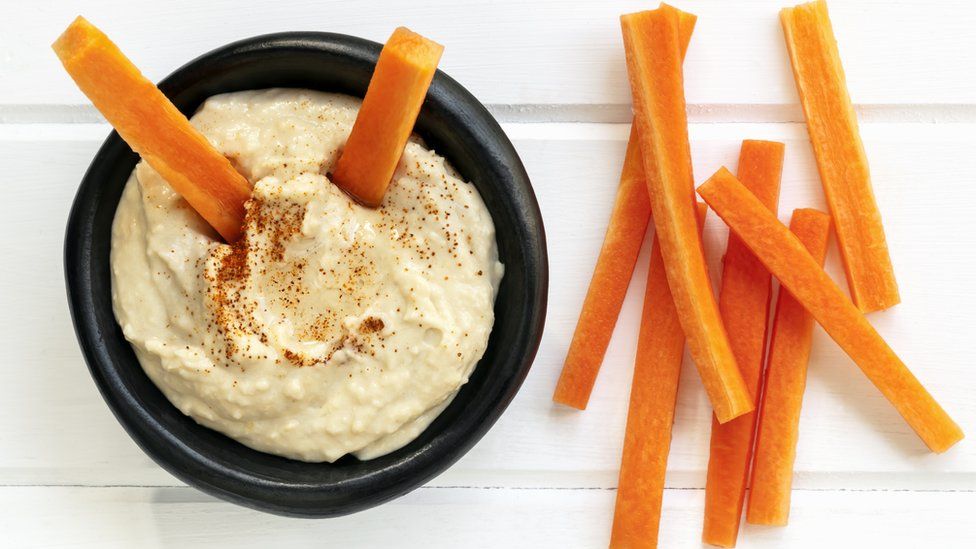Hummus crisis? What hummus crisis?
- Published

Hummus crisis? What hummus crisis?
Sainsbury's and Marks & Spencer have been forced to withdraw parts of their ranges from stores due to a "production issue".
With Britain consuming around 12,000 tonnes of the stuff a year, the shortage has led to social media hysteria over the Middle Eastern dip.
But don't panic, it's all going to be OK. Here's everything you need to know about hummus, and what Twitter users are calling a national crisis.
So what is hummus?
Wait, don't you mean houmous? Let's sort out the disagreement over how to spell it first.
Wikipedia lists five spellings - hummus, houmous, humus, hommus and hommos.
Many supermarkets go for houmous, while the Oxford English Dictionary lists the hummus version first - so let's stick with that.
Hummus is an ancient peasant dish - usually of cooked and mashed chick pea, tahini (sesame paste), lemon and garlic - which hails from the countries of the Middle East, where unleavened bread is used for dipping.
Why is it so popular in the UK?
Hummus was once considered an ethnic delicacy with a hippy following or something that only vegetarians would eat.
But Britain's love affair with the dip has led to the country being dubbed the hummus capital of Europe.
It has risen in popularity in the UK to the point where two in five households are said to have a pot in the fridge.
Waitrose is thought to have been the first British supermarket to stock hummus, introducing it in the late 1980s.
You might also like:
Marks & Spencer followed in 1990 and Tesco followed a few years later. Now all the major supermarkets carry it on their shelves.
Customers are spoilt for choice in 2017 with hummus coming in a range of flavours including onion, lemon and coriander, roasted tomato, red pepper, piri piri, sweet chilli as well as organic, low fat and extra rich versions.
It is said to be so popular because it comes pre-prepared and has little saturated fat and a low GI value.
So why has it been taken off the shelves?
Sainsbury's and Marks & Spencer were forced to withdraw their hummus following complaints their ranges did not taste as they normally should.
Sainsbury's said it had taken a number of lines off the shelves because of a "production issue" and were investigating.
It was the same problem over at Marks & Spencer which also removed some of its hummus from sale because of a "supplier issue".
Both supermarkets reassured customers that the problem with their hummus was not a food safety problem.
In a statement, Marks & Spencer also said it wanted to let consumers know that its recipe had not changed. Phew.
How have people reacted?
Judging by Twitter, the UK has entered a national crisis.
How should we cope?
In this time of desperate need, one option is for hummus lovers to make their own.
The BBC Good Food Guide says you need a can of chickpeas, 2 tbsp of lemon juice, two garlic cloves, 1 tsp of ground cumin, salt, 100ml of tahini,4 tbsp of water, 2 tbsp extra virgin olive oil and 1 tsp paprika.
You combine the chickpeas, lemon juice, garlic, cumin, salt, tahini, and water in a food processor, and blend to a creamy purée.
Put it in a bowl, drizzle with extra virgin olive oil and sprinkle on the paprika. And you're done. Yes really, that is it.
If that seems like too much hard work don't worry. Marks & Spencer already has its hummus range back in store and Sainsbury's said they expect to be fully stocked again on Thursday.
- Published7 October 2011